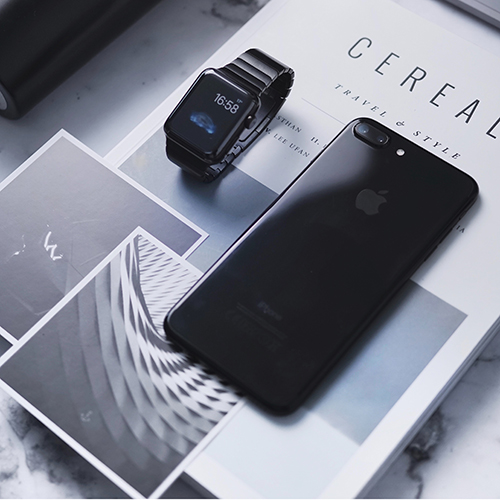Has the Apple Watch made other watches obsolete?
August 18, 2017

It wasn’t just the iPhone 8, iPhone 8 Plus and iPhone X that we were luckily enough to be gifted at Apple’s keynote last year. Enter the Apple Watch Series 3. This fresh and shiny incarnation has been freed of its iPhone shackles, and its feature list is long and divine.
The Apple Watch 3 – which debuted in September 2017 – is slowly and inexorably eating up the wrists that once belonged to the traditional wristwatch…
According to market research firm Forrester, smartwatch sales are set to almost double
Does this mean that the gentle tick of the wind-up watch is soon to tock its last?
Not necessarily…

History vs innovation
“Smartwatches are a very recent innovation and are still going through fine tuning. Mechanical watch and clock-making on the other hand is an art form that’s been being perfected since around 1300, with the first wristwatch being made around 1868. In this time the mechanical watch has gone through several iterations resulting in what we see today,” says James Mainwaring, watch expert at Est.1897
We all know that technology is always changing and everybody wants that one thing, until they don’t. Or, until it becomes so ubiquitous, we can’t remember life without it – like how did the iPhone only launch in 2007?
The smartwatch market has moved beyond the early tech adopters to include the fashion-forward, the fitness-inclined and the regular Joes and Janes. Folk who want a functional, practical, piece of kit on their wrists that also happens to organise their lives. As long as they can actually work the thing, that is.
“At the height of anticipation for smartwatches, many consumers couldn’t wait to have a piece of high technology on their wrist,” says Michael Grant.
“However, I really do feel that the novelty of the smartwatch is wearing off as it is much higher maintenance than a traditional watch. Traditional watches also have a sentimentality attached to them, whether someone has inherited one from a family member or if they are buying one as a future heirloom.”
True. But wouldn’t it be helpful if your traditional timepiece from great-grandpa could also tell you how many calories are in that cheeseburger? Or motivate you to go for a walk to rack up more steps on the pedometer?
Smartwatches are always on. They constantly remind you of your emails and calls and messages and jobs, arguably forcing you to be more organised and functional. The wristwatch lets you just get on with that urgent mid-morning nap.
One or the other – or both?
Smartwatches aren’t necessarily the physical embodiment of your personality. But how about the idea that the smartwatch is the virtual embodiment of your digital self? Your personalised world-within-a-world where your life is mapped according to the GPS of your digital heart.
It may not be flash on the outside (unless your Apple watch happens to be Hermès
For Simon Wolf, CEO of WOLF
“Apple Watches have created a new business in the watch industry that isn’t to be confused with replacing classic watches. While the smartwatch is more than just a timepiece, a luxury wristwatch is more than just a timepiece.”
Who says you should only have one or the other anyway? There’s no Wrist Protection Programme demanding that only one timekeeping device is allowed per wrist per lifetime.
Get one of each. Actually, get two, and send the other ones to us. We rather like the idea of having the latest Apple Watch 3 AND a luxury timepiece that will become a part of our family heritage.
Happy to send wrist measurements…
Main pic: Unsplash via Julian O’hayon